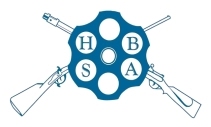Lebel 1886 M93
posted 09 November 2021, 1:53 am
| 01. Original name | Lebel Modelle 1886 M93 | |
| 02. Other official names | 1886 M93 | |
| 03. Popular names | Lebel rifle | |
| 04. Chamberings | 8×50 8mm Lebel | |
| 05. Designed by | Team led by General Tramond and including Officers Gras, Lebel, Vielle, Bonnet, Desaleux, Crose & Verdin | |
| 06. Design date | 1885 | |
| 07. In service date(s) | 1886 – 1945 | |
| 08. Adopted by | French Army & Navy | |
| 09. Production quantities | 3,500,000 | |
| 10. Mechanism | Bolt action & tubular magazine holding 8 cartridges | |
| 11. Weight | 9.2 lbs / 4.18 Kgs | |
| 12. Mountings | None, apart from when a telescopic sight is added for sniping | |
| 13. Practicality in action | No vices, apart from the fact that once the tubular magazine has been expended there is no way of quick reloading | |
| 14. Comments / Other information | 1884: French chemist Paul Vielle produces the first smokeless powder. A new rifle is urgently required, and the French military adapt the Gras bolt action and Kropatschek tubular magazine to fulfil that requirement. Lt-Col Nicholas Lebel designs a new flat-nosed 8mm FMJ bullet for the Balle B cartridge and, although he takes no credit, the new rifle is nevertheless still designated the Lebel Modelle 1886 M93. The magazine holds eight rounds, which can be augmented by another round placed in the magazine elevator and another in the chamber, thus potentially making ten in all, though this tubular design obviously doesn’t permit quick reloading. Also, due to the tubular magazine, an extra ring is made round the primer. This accepts the nose of the pointed bullet, thus preventing the point from striking that same primer. This is also aided by the bottle-shaped cartridge, developed from the original 11mm Gras round, which points the nose of the bullet into the aforementioned ring, as can be seen in the video. The other thing to note, in the video demonstration, is the operation of the bolt, having loaded the eight-round magazine. The bolt is operated twice, once to withdraw the first round from the magazine and place it in the elevator, the second time to load it into the breech. Some three and a half million Lebels were produced at the three factories of St. Etienne, Chatellerault and Tulle, and it saw long service from its introduction in 1886, through the First World War and well into the Second World War. In the mid-thirties a new round, the Balle N, was introduced, for machine-gun use, and many Lebels and Berthier rifles were converted to take the new round, the letter “N” being stamped at the rear of the barrel and on the Knox form to indicate the conversion, Balle “N” being unsuitable for the original chambering, not least owing to the slightly higher shoulder of the case. Also, in 1935, a shorter version of the Lebel was introduced, with a three-round magazine, and some fifty thousand of these were manufactured. The accompanying bayonet for the Lebel was of long, needle shaped cruciform design, and was nicknamed “Rosalie” by the French infantryman after a current music-hall song, sung by one Theodore Borel, which eulogised its more gruesome lethal properties! |
